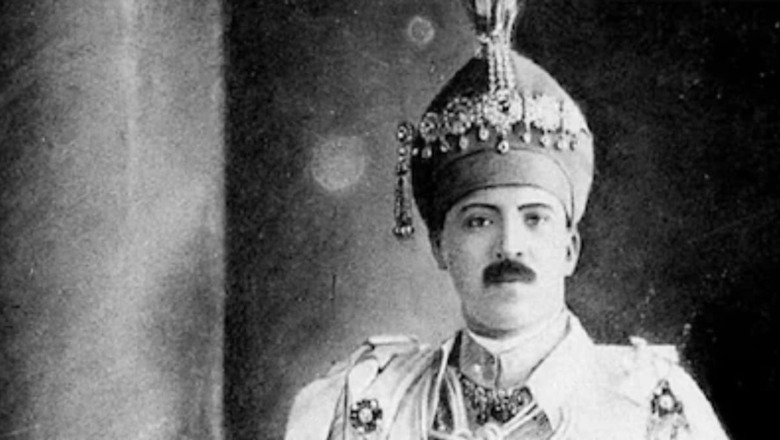
views
Osman Ali, the last Nizam of Hyderabad, was among the richest people in the world. However, some considered him the illegitimate son of a Marwari Seth throughout his life. His father had complained to the Indian government, claiming that Osman Ali was not his son. He even went to the extent to say that his other two sons were his legitimate children. This story was detailed by Diwan Jarmani Dass in his book Maharaja.
The full name of the Nizam was Mir Osman Ali Khan, also called Asaf Jah. His father, the sixth Nizam of Hyderabad, was Mehboob Ali Khan. The Nizams of Hyderabad originally ruled under the Mughals. When the Mughal Empire weakened, they rebelled and established their own state.
It is said that the Nizam devised new ways to extract money from his subjects. Although he received a hefty salary, he lived in misery. Whether for hosting parties or welcoming guests, the expenses were always covered by the state treasury.
Despite having crores of rupees, he spent only a few thousand on himself and his mistresses. His palace was filled with mistresses, and his harem was vast. He had many wives and eunuch servants.
However, the Nizam dressed very simply. His socks often slipped down his legs, and his pyjamas were so short that part of his legs was visible above his socks. He wore an old cap that was more than 35 years old. Despite its dilapidated condition, he liked it.
The sixth Nizam had many Begums but also maintained a relationship with a woman who was the mistress of a Marwari Seth. A boy was born from this relationship, who resembled a Marwari. The Nizam accepted him as his son, as the woman claimed he was.
When the boy was brought to the palace, the Nizam declared him his son. As he grew, the boy’s appearance and habits increasingly resembled that of a Marwari Seth, especially his tendency to save money.
After failing to change his son’s habits, the Nizam complained to the Indian government, stating that the boy was not his. He insisted that his two sons, Salavat Jah and Basavat Jah, born to his legitimate wives, should be recognized as his real heirs. These two princes bore a strong resemblance to the sixth Nizam in both looks and demeanor.
Osman Ali, however, was clever from a young age and discovered that the sixth Nizam had sent a letter to the Viceroy regarding his parentage. Shortly after, the sixth Nizam fell ill and died. Since Osman Ali was considered his eldest son at the time, he ascended the throne, although the sixth Nizam’s other two sons opposed this.
Upon taking the throne, Osman Ali quickly expelled all members of the royal family from his palace, leaving some of them to beg in the streets. Salavat Jah and Basavat Jah appealed to the British government, arguing that they were the legitimate sons of the sixth Nizam and rightful heirs to the Hyderabad State. They claimed that Osman Ali had usurped the throne by force and deception.
Their appeal reached King Edward VII of England, who was prepared to rule in favor of Salavat and Basavat. However, before the decision could be made, the king suddenly fell ill and died. Osman Ali then ensured that his brothers’ appeal was rejected, securing his position as the legitimate and sole ruler of Hyderabad State.
Salavat Jah was initially given Hyderabad Palace in Mumbai, but Osman Ali later confiscated it. When Salavat Jah complained to the British Resident, an order was issued to return the palace. Osman Ali then proposed to buy the palace from Salavat Jah but keep possession of it. Both the Resident and Salavat agreed to this deal.
However, Osman Ali had another plan. He attempted to bribe the official appointed to set the palace’s price. However, his attempt failed. The official, Kawasji Jahangir, was an honest man and refused the bribe. He fixed the price of the palace at Rs 17 lakh, which Osman Ali had to pay. Osman regretted losing such a large sum.
Salavat Jah died under mysterious circumstances, and his property and wealth passed on to the Nizam. Meanwhile, Basavat Jah, the second prince, continued to receive a monthly allowance of Rs 5,000 from the Hyderabad State treasury throughout his life. This amount was set by the Government of India.

















Comments
0 comment